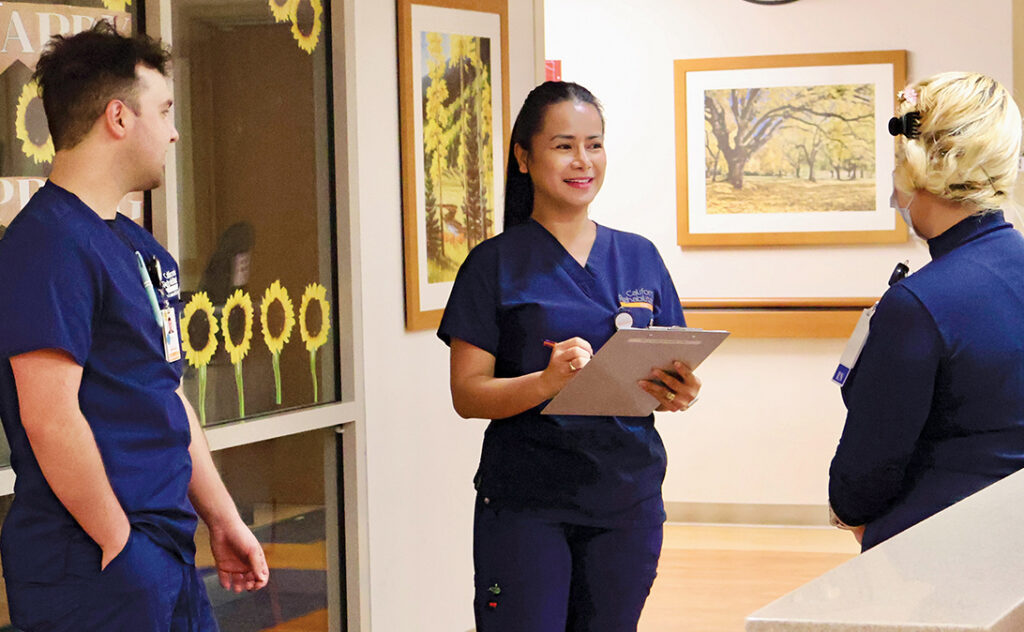My Specialty
Orthopedic Rehab, Cheryll Sator, California Rehab Institute
Helping patients regain function and return to independent living

Can you describe the general trajectory of your nursing career?
I earned my BSN at Ateneo de Zamboanga University in the Philippines in 2001 and began my nursing career in a private pain and rehabilitation clinic. I later became a clinical instructor, which I really enjoyed. My husband was a physiatrist — a physical medicine and rehabilitation specialist — and he established the very first rehabilitation practice in our city.
I saw firsthand how specialized rehabilitation services can transform outcomes for patients who previously had no access to such care, addressing not just their medical condition, but also their functional abilities, quality of life, and integration into society. After we relocated to the States in 2015, I joined California Rehabilitation Institute in 2017.
How did you find yourself working in orthopedics?
My journey into orthopedic rehabilitation nursing was inspired by my husband’s work, which fundamentally reshaped my nursing philosophy. It showed me that rehabilitation isn’t simply an optional add-on to medical care, but an essential specialty that often determines whether a patient merely survives or truly thrives after illness or injury.
The principles I learned during those formative years — patient-centered care, interdisciplinary collaboration, creative problem- solving, and a focus on functional outcomes — continue to guide my practice today. I became a certified rehabilitation registered nurse (CRRN) in 2019, which reflects my commitment to this specialty.
Tell us about your responsibilities as night shift nursing supervisor.
California Rehabilitation Institute is a 138-bed hospital focusing on complicated rehabilitation patients. We have several specialties, including all kinds of orthopedic issues. My orthopedic rehabilitation floor has an average of 20 patients. I generally supervise three CNAs and four RNs per shift.
The night shift is significantly different from the day shift. During the day, patients are quite busy undergoing occupational and physical therapy, but at night, the focus shifts to comfort measures, pain management, and interventions to promote high-quality sleep and rest.
We try to insure that patients have a good night so they can make the most of their therapies during the day. As a leader, I have a huge responsibility to create an environment where both staff and patients can thrive.
What is it like seeing patients recover?
Our goal is to help our patients return to independent living and regain as much of their previous functional abilities as possible. Some patients eventually graduate and go home to their families, while others are discharged to skilled nursing or other facilities.
The most rewarding thing is seeing them go home and resume their lives. When we see them, patients have lost so much — seeing them regain autonomy is so satisfying.
Can you share a story that illustrates a patient’s successful rehabilitation?
On our floor, we often have patients who’ve suffered from back pain for many years. Some have the expectation that they’ll be home and functioning normally right away, and they’re disappointed that the pain is still there and they’re still limited in their mobility.
There was one patient who’d had postoperative complications after a spinal surgery at another hospital. Her treatment went well overall, but the patient felt very disheartened. We provided her with psychological treatment that enabled her to cycle through her disappointment and come away feeling she’d had a good rehab experience.
This patient was a great example of the overall package we can provide: We addressed her multifaceted needs with a combination of physical therapy, occupational therapy, recreational therapy, psychological support, and even a chaplain. She was eventually able to go home after accomplishing the goals of her rehabilitation.
What characteristics are most important for nurses working in this area?
This work requires a great deal of love and patience, as well as the ability to cooperate and collaborate with the multidisciplinary team.
Our patients face huge challenges, including pain and disability, so it’s natural for them to sometimes be impatient or unhappy. They need nurses who are patient, kind, and compassionate to help them be safe in the care environment and recover as quickly and fully as possible.
Do you have any professional goals you’d like to share?
I recently completed my MSN-FNP education, and am now board-certified. I love rehabilitation nursing and orthopedics so much, and I am looking forward to incorporating this experience into my career path as a nurse practitioner.
KEITH CARLSON, RN, BSN, NC-BC, has worked as a nurse since 1996 and offers expert professional coaching at www.nursekeith.com.
In this Article: Career Advice, Leadership and Management


